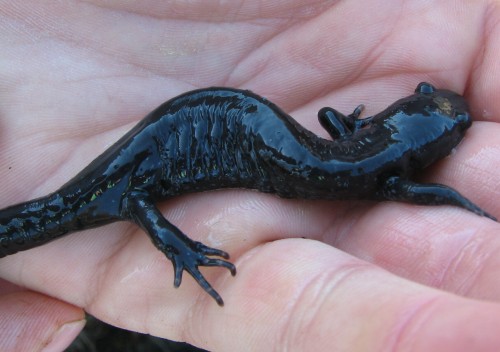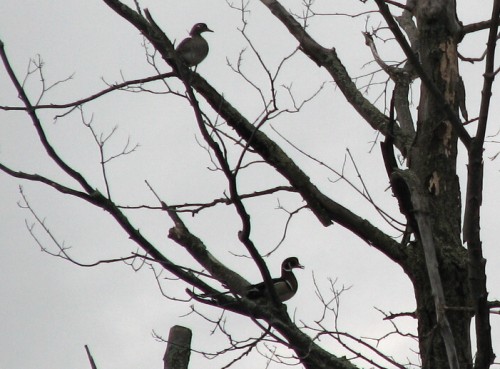|
|
THIS WEEK |
THIS SPRING |
2007 TOTAL |
SITE TOTAL |
|
# birds (and species) banded |
-- |
-- |
41 (8) |
9359 (96) |
|
# birds (and species) repeat |
-- |
-- |
12
(3) |
1561 (52) |
|
# birds (and species) return |
-- |
-- |
4 (2) |
204 (26) |
|
# species observed |
36 |
49 |
53 |
181 |
|
# net hours |
-- |
-- |
37.0 |
14059.8 |
|
# birds banded / 100 net hours |
-- |
-- |
110.8 |
66.5 |
|
|
Note: table does not include nocturnal banding (owls) |
Bander-in-charge: Barbara
Frei
Assistants: Jean Beaudreault, Martin Bowman, Shawn Craik, Jean
Demers, Gregor Gilbert, Gay Gruner, Barbara MacDuff, Betsy McFarlane,
Clémence Soulard,
Notes:
The 3rd
week of the spring was a turbulent one indeed, and most would agree that
a good portion of it did not feel spring like in the least! This was the
final non-banding week of MBO’s spring 2007 season, and thanks to some
dedicated volunteers everything was ready to go, with the census route
clipped, nets readied and pole strings tightened.
Despite
the well-below normal temperatures and snowfall on Sunday night, further
signs of spring slowly emerged beneath the frosty exterior. Wood Ducks
were seen 6 out of the 7 days, and other waterfowl such as Mallards,
American Black Ducks, Green-winged Teal, Ring-necked Ducks and Hooded
Mergansers were seen visiting our ponds or flying overhead.
Four
new species were seen for spring 2007 this week. Some large flocks of
Snow Geese joined the Canada Geese on their continued migration
northwards, and if you were patient enough to scan the flocks you were
usually rewarded with a sight of the darker ‘blue-morph’ of the species.
The rattling call of a male Belted Kingfisher greeted censusers early
Saturday morning as it perched atop the large cottonwood trees bordering
the rear ponds. Cold and blustery Sunday and Monday morning
censuses brought a sole White-throated Sparrow and Northern Harrier
respectively, a small but pleasant reward for stiff fingers and frosty
binoculars.
|
This week's top 10
(last week's rank in parentheses) |
|
#
individuals banded |
mean # individuals observed daily |
|
- |
Canada Goose (198) (1) |
|
- |
Red-winged Blackbird (31)
(2) |
|
- |
Snow Goose
(28) (-) |
|
- |
American Crow
(20)
(3) |
|
- |
American Robin (13)
(5) |
|
- |
Black-capped
Chickadee
(9) (6)
|
|
- |
Blue Jay
(9) (10) |
|
- |
Mallard (8)
(8) |
|
- |
Ring-billed Gull
(8) (4) |
|
- |
Song Sparrow
(6)
(6) |
|
With
the cold weather and northern winds stalling the migrants south of us,
the top ten this week has not changed a great deal. The migrating Canada
Geese and ubiquitous Red-winged Blackbirds remain at the top of the
species observed. The flocking Snow Geese, often recognized by their
higher pitched call and far more disorganized flight than their larger
and darker cousins, rapidly jumped to 3rd place. Wood Duck
and European Starling dropped from the top ten this week as Black-capped
Chickadees and Blue Jays slowly climbed the ranks.
|

With the
sighting of several duck species this week as well as the
appearance of the season's first Belted Kingfisher, the
naturalist curiosity kicked in for some of us – leading to a
closer look at what exactly is beneath the water of our ponds
and small wetlands. The answer thus far is several dozen leeches
and water beetles, as well as a healthy salamander population.
(Photo by Barbara Frei) |


